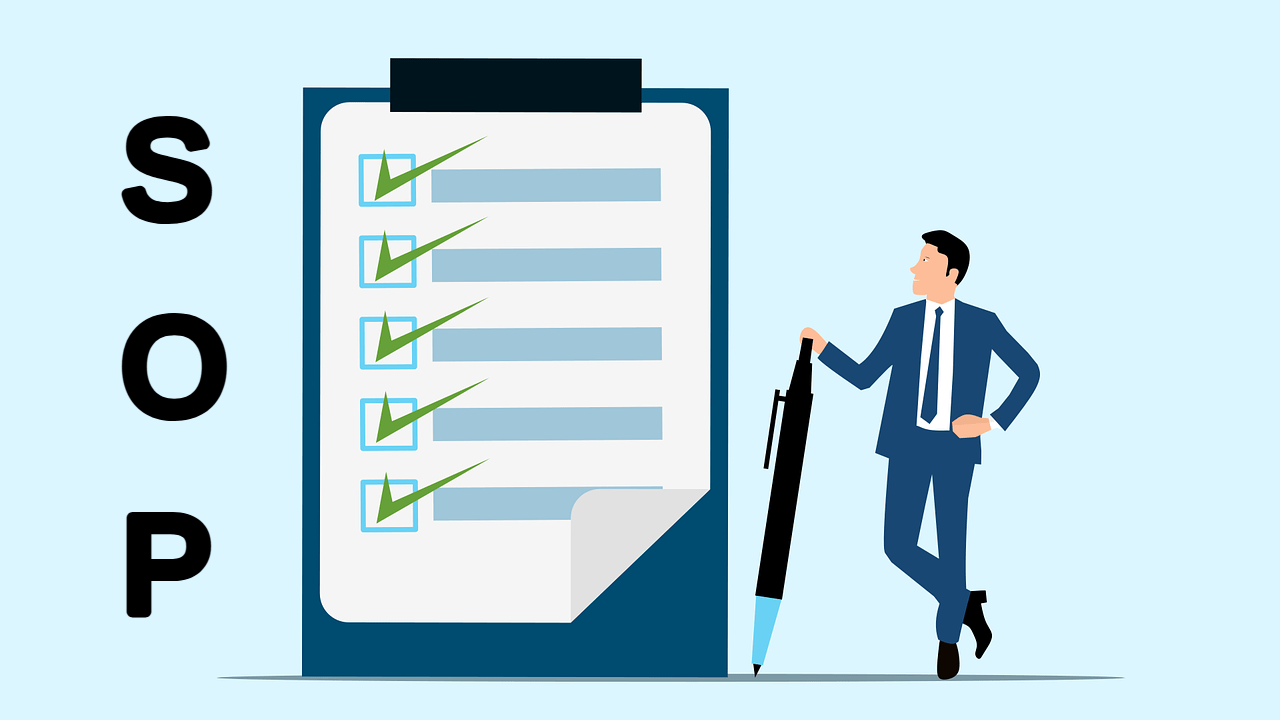15 Tips on How to Write a SOP (Standard Operating Procedure) Manual

Writing an SOP (Standard Operating Procedure) manual for operating a restaurant involves documenting the step-by-step processes and guidelines to ensure consistency, efficiency, and quality in your restaurant operations. Here’s a comprehensive guide on how to write an SOP manual for your restaurant:
- 1. Introduction
- 2. Table of Contents
- 3. Organizational Structure
- 4. Opening and Closing Procedures
- 5. Health and Safety
- 6. Front-of-House Operations
- 7. Back-of-House Operations
- 8. Staff Training and Development
- 9. Customer Service
- 10. Equipment Maintenance
- 11. Financial Procedures
- 12. Employee Conduct and Dress Code
- 13. Marketing and Promotion
- 14. Closing Notes
- 15. Appendices
1. Introduction
Provide an overview of the SOP manual, its purpose, and the importance of following standard procedures in the restaurant. Clearly state the objectives and goals of the SOP manual.
2. Table of Contents
· Create a detailed table of contents that lists all the sections and subsections covered in the manual for easy reference.
3. Organizational Structure
Outline the organizational structure of the restaurant, including management roles, reporting hierarchy, and departmental divisions. Specify the responsibilities and duties of each position within the restaurant.
4. Opening and Closing Procedures
Detail the steps required to open and close the restaurant, including tasks like unlocking and locking the premises, setting up equipment, checking inventory, and ensuring cleanliness.
5. Health and Safety
Establish guidelines for maintaining a safe and hygienic environment. Outline procedures for proper food handling, storage, and preparation to prevent foodborne illnesses. Specify safety protocols for handling equipment, handling chemicals, and emergency situations.
6. Front-of-House Operations
Document procedures for greeting and seating guests, taking reservations, and managing waiting lists. Outline guidelines for handling customer complaints, special requests, and VIP treatment. Detail steps for taking orders, serving food and beverages, and processing payments. Include instructions for managing the cash register and handling cash transactions.
7. Back-of-House Operations
Describe the kitchen operations, including food preparation, cooking, and plating standards. Specify recipes, portion sizes, and presentation guidelines for each menu item. Document procedures for receiving, inspecting, and storing food and supplies. Outline dishwashing and cleaning protocols for maintaining a clean and sanitary kitchen.
8. Staff Training and Development
Provide guidelines for training new staff members, including orientation, job-specific training, and ongoing professional development. Specify training requirements for each position and document training resources and materials.
9. Customer Service
Define your restaurant’s service standards, including greeting customers, addressing their needs, and ensuring their satisfaction. Detail steps for handling customer complaints, resolving issues, and managing difficult situations.
10. Equipment Maintenance
Provide guidelines for regular maintenance and cleaning of equipment, including ovens, grills, refrigerators, and dishwashers. Specify procedures for reporting and repairing equipment malfunctions.
11. Financial Procedures
Document procedures for managing cash flow, including cash handling, daily cash reconciliation, and cash deposits. Outline steps for tracking inventory, conducting stock counts, and placing orders with suppliers. Specify protocols for tracking and reporting sales, expenses, and profit margins.
12. Employee Conduct and Dress Code
Establish guidelines for employee conduct, including dress code, personal hygiene, and punctuality. Document expectations for professional behavior and interactions with coworkers and customers.
13. Marketing and Promotion
Include guidelines for promoting the restaurant through various marketing channels, such as social media, print advertising, and local partnerships. Detail procedures for managing online reviews and responding to customer feedback.
14. Closing Notes
Summarize the key points covered in the SOP manual. Provide any additional information or resources that may be helpful for employees.
15. Appendices
Include any necessary forms, checklists, or templates that support the SOPs outlined in the manual. Remember to regularly review and update the SOP manual to reflect changes in processes, regulations, and best practices. It should serve as a living document that evolves with your restaurant’s operations.
For more information on how to write a SOP or how to structure your business for growth, contact us.
- How does the Stark Law work in Franchise Business Models: Legal Considerations and Compliance - January 25, 2024
- Jollibee Franchise: A Flavorful Journey Through History - January 25, 2024
- How Franchisors Tackle Daily Challenges in Business Management - January 23, 2024

